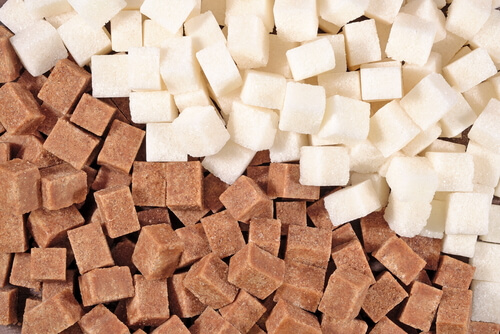The choice between beet sugar vs cane sugar can influence the sweetness level of certain desserts.
The choice between beet sugar vs cane sugar can influence the sweetness level of certain desserts.
Blog Article
Discovering the Distinctions being used and Advantages Between Beet Sugar Vs Cane Sugar
In the culinary globe, the choice in between beet sugar and cane sugar is not simply about sweet taste but entails a nuanced consideration of flavor, application, and influence. While both sugars come from various plants, each undertakes unique production processes that subtly influence their characteristics and viability for different recipes. As chefs and customers increasingly focus on both the environmental and flavor profiles of their active ingredients, recognizing these distinctions ends up being essential. This exploration provides understanding into how each sugar kind can best boost culinary productions.
Origins and Manufacturing Procedures of Beet and Cane Sugar

Walking cane sugar, on the various other hand, comes from the sugarcane plant, a tropical grass indigenous to Southeast Asia yet currently cultivated in exotic zones worldwide - beet sugar vs cane sugar. The production of cane sugar starts with the harvesting of cane stalks, which are crushed to launch the juice.

Nutritional Material and Wellness Considerations

When contrasting the dietary material of beet sugar and cane sugar, it ends up being obvious that both types basically supply the exact same caloric values, with about 16 calories per tsp and no significant nutrient variety. Each is made up nearly totally of sucrose, which is an easy carb that supplies fast power but lacks vitamins, minerals, or fiber. This similarity reaches their influence on wellness, specifically worrying blood sugar level degrees. Both sugars, when consumed over, can contribute to elevated blood sugar degrees, a danger aspect for diabetic issues and various other metabolic conditions. Excessive consumption can lead to weight gain and dental problems, as both sugars are similarly cariogenic, promoting tooth degeneration. From a wellness perspective, regulating intake of any kind of sort of sugar, whether from beet or cane, is recommended to stay clear of these prospective unfavorable effects on wellness. Thus, neither holds a distinct benefit over the other in terms of wellness advantages.
Flavor Accounts and Culinary Applications
Despite their similar chemical structures, beet sugar and cane sugar differ subtly in taste, which can influence their use in numerous cooking contexts. Walking stick sugar frequently lugs a tip of molasses, even in its polished kind, lending a warm, caramel-like undertone that improves baked items, coffee, and chocolate-based dishes. On the various other hand, beet sugar is defined by its very improved, neutral preference, making it a functional sugar that does not change the taste profiles of recipes.
Environmental Impact and Sustainability
While both beet and cane sugars useful link are obtained from plants, their environmental influences differ dramatically due to the unique approaches of growing and handling needed for each. Sugar beet growing typically involves substantial mechanization, which can increase fossil fuel usage and carbon emissions.
Furthermore, the handling of sugarcane frequently generates a considerable quantity of waste, including bagasse, which, although functional as biofuel, frequently adds to air pollution if melted inefficiently. Sugar beet handling uses more of the raw products, causing much less waste. Both markets deal with obstacles in lowering their environmental impacts, yet recurring innovations in agricultural techniques and waste monitoring are intending to improve sustainability.
Economic Elements Affecting the Sugar Market
The economic characteristics of the sugar sector are substantially affected by international market demands and profession policies. Variables such as tariffs, aids, and worldwide trade agreements play crucial duties in forming the competitive landscape. In regions where sugarcane or sugar beet manufacturing is subsidized, producers might have a financial advantage that allows them to offer lower rates on the worldwide market. This can create disparities in profitability and market accessibility for producers in nations without such subsidies.
Additionally, variations in international need for sugar, influenced by dietary trends and commercial use in foodstuff, straight effect rates and manufacturing levels. beet sugar vs cane sugar. Climate condition also play a browse around this site pivotal role, as they can significantly affect plant yields and, consequently, the supply chain. This variability introduces a level of economic uncertainty that can lead to investment volatility in sugar production sectors, influencing decisions from growing to market pop over to these guys strategy
Conclusion
In conclusion, both beet and cane sugar have special qualities that suit various cooking needs. While cane sugar imparts a rich taste perfect for boosting baked items, beet sugar's nonpartisanship is best for lighter meals.
Report this page